What is Flock Printing?
On any smooth surface, a velvet-like texture is created. The main purpose of this printing is not only the transfer of color or design, but also to provide a complementary surface texture that not only looks attractive to the eyes but also feels soft and absorbent to the touch. In this process, first of all, on the fabric or substrate a special type of adhesive glue is applied, which is according to the specific shape of the design. Immediately after this, “flock fibers” — which are extremely fine, cut synthetic fibers (mostly nylon, rayon, or polyester) — are thrown on this surface by means of a special machine after giving them an electrostatic charge, aligning them vertically so that they strongly stick on the adhesive surface.
Send us your logo or design now to see how it looks with this printing technique — and get a free 3D mockup within 24 hours.
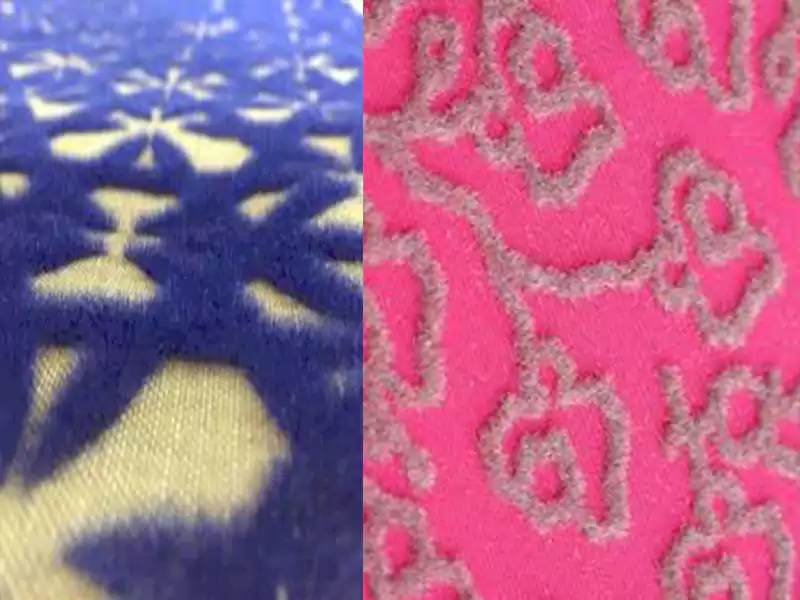
From Concept to Perfection Explore Our Flock Printed Products Collection.
As an experienced and professional clothing manufacturer, we specialize in bringing innovation and quality together. With our expertise in Flock printing technique, we have crafted a wide range of products including t-shirts, hoodies, sweatshirts, and tracksuits that stand out with their unique appeal. This carousel showcases how Flock adds depth, texture, and vibrant detail to garments, turning simple apparel into premium fashion pieces. Backed by years of manufacturing experience and advanced printing skills, we help brands create collections that not only look stunning but also reflect durability and craftsmanship. Trust our expertise to transform your vision into reality with precision and style.
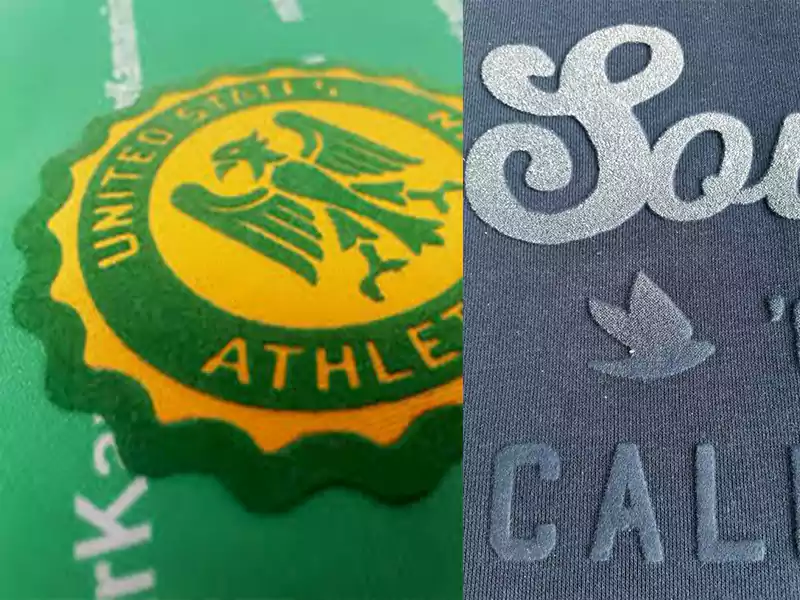


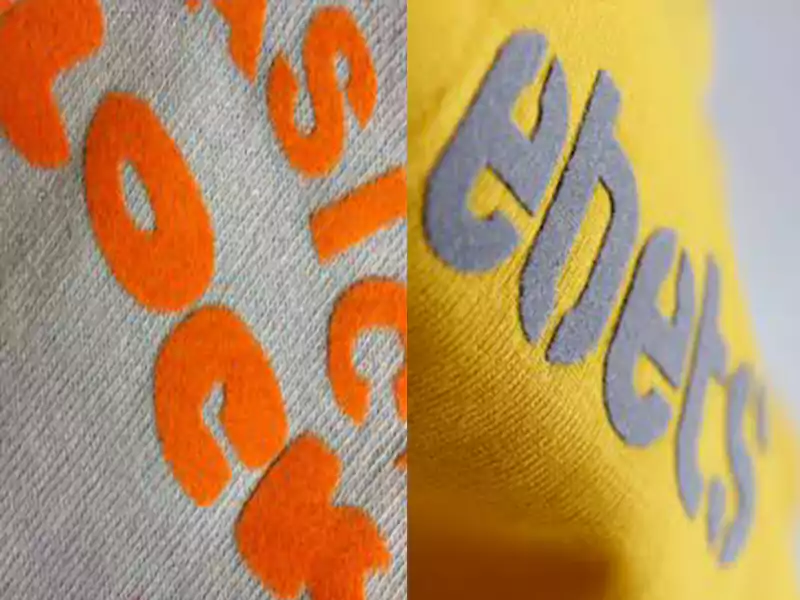
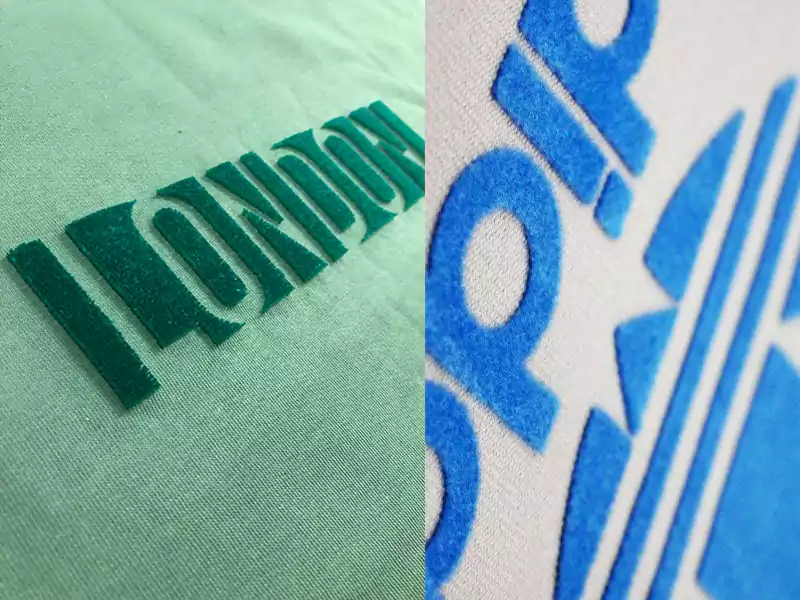
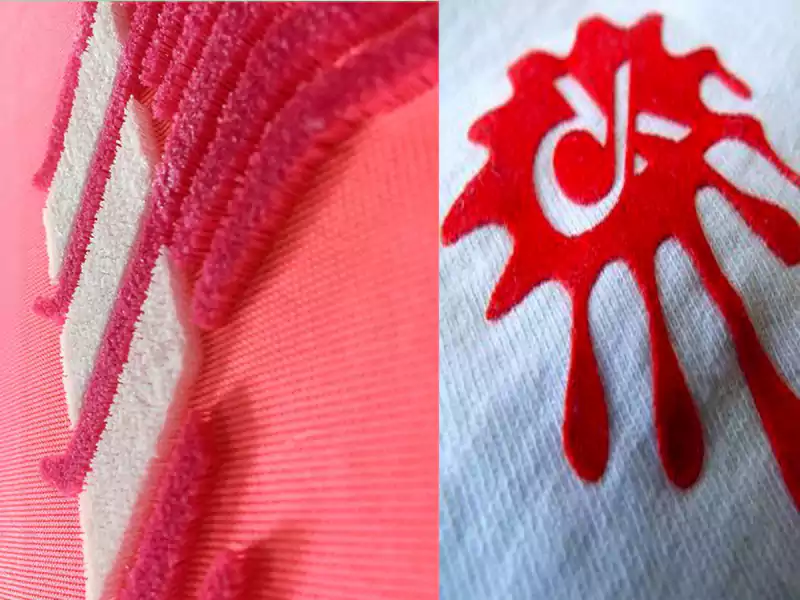
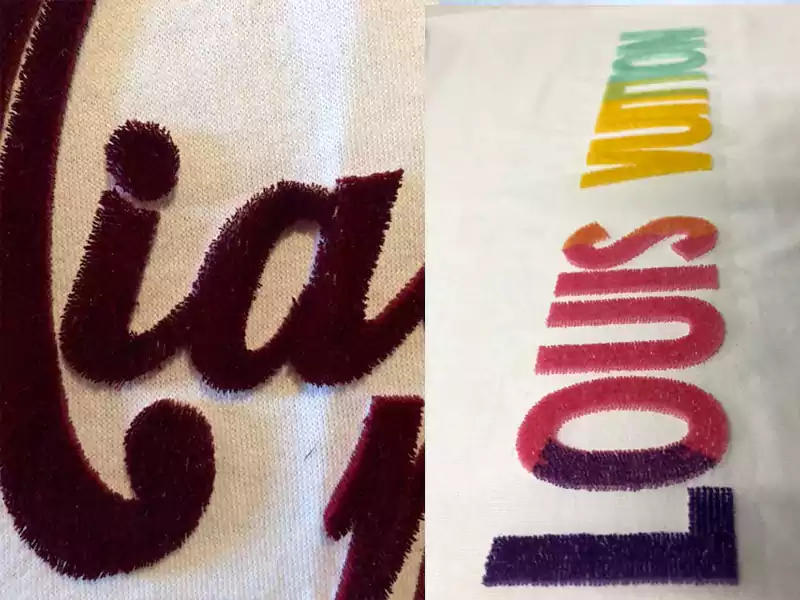
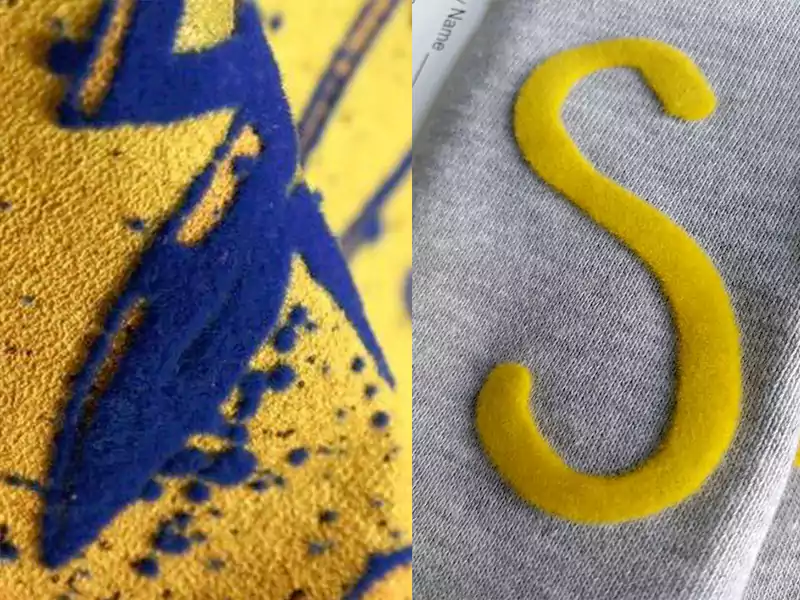
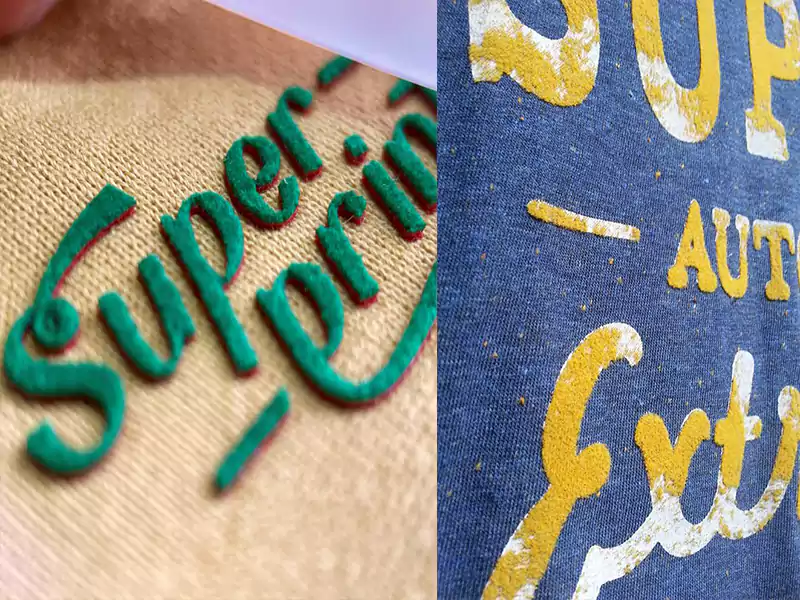
This whole process happens in a special flow in which pressure, temperature, humidity, and fiber quality are completely controlled so that the fineness, depth, and uniformity of the print is not affected. Once the flock fibers stick to the glue, it is dried and heat-cured so that it becomes durable and does not get damaged quickly by washing or wearing. The biggest advantage of flock printing is that compared to other printing methods it not only increases visual beauty but also adds brand value. That is why this technique has a special place not only locally but also in Europe, America, and the Middle East fashion brands. The roots of flock printing are found in ancient times, when in China and Japan in the 17th century around the history and origin of flock printing, for creating a velvet-like surface on paper and wood, natural fibers were used. However, the proper beginning of modern textile flock printing happened in the mid-20th century, when in Europe the method of sticking fibers on fabric by the help of electric charge was introduced. In the 1950s, textile experts of Germany and Italy started adopting flock printing as a proper fabric finishing process. At that time it was mostly specific for decoration, luxury clothing, or royal designs. Its main purpose was not only beauty but also to take the structure of the garment to a higher level. After 1970 this technology, with machinery, was taken to a faster, cleaner, and consistent quality, which entered flock printing into mass production.
In the present era flock printing is not only a printing option but has become a branding statement. As in fashion and streetwear the importance of high-level detailing and customer experience is increasing, likewise the demand of flock printing is also growing rapidly. In the fashion industry the use of flock printing is especially happening in branded hoodies, t-shirts, women’s clothing, and children’s garments to give a completely separate premium touch. Furthermore, manufacturers like Ascension International with modern machinery, controlled processes, and high-quality flock fibers create such prints which really increase the value of a brand.
Process of Flock Printing:
Flock Printing is a process in which on fabric velvet-texture fibers (Flock Fibers) are stuck through adhesive (glue) by electric method or mechanical method, so that the design not only appears but also can be felt by touch. This process consists of many stages, which are completed in a special sequence and control:
Stage 1: Fabric Preparation
First, the fabric on which flock printing is to be done, is cleaned, dried, and fully pre-treated with pressure so that on its surface no dust, moisture, or oil is present. Mostly these fabrics are combed cotton, poly-cotton blend, or viscose — because flock printing works better only on smooth surface fabrics.
Stage 2: Artwork Design
For flock printing a special design is prepared — these are mostly simple logos, texts, or graphics with limited detail. The reason is that the structure of flock fibers cannot handle fine details. The design is prepared in CMYK or Spot Color mode and is adjusted for specific printing screen or transfer film.
Stage 3: Printing of Adhesive Glue
The prepared design is printed on fabric through screen printing with a special glue (adhesive paste). This glue is the base that holds the flock fibers strongly. The quantity, thickness, and placement of the glue is very important — in case of mistake the whole print can get ruined.
Stage 4: Application of Flock Fibers
This is the most important and technical stage. Two main methods are used:
1. Electrostatic Flocking:
In this method flock fibers are given an electric charge (20,000–80,000 volts), which makes them stand vertically (90 degrees) in the glue stuck on the fabric. This method gives cleaner, professional, and stronger results.
2. Mechanical Flocking:
In this method flock fibers are thrown on the adhesive part through air or compressed air. This is a comparatively lower quality method and is used in mass production or low budget.
Stage 5: Drying and Curing
After sticking the flock fibers, the fabric is dried at specific temperature in heat press (generally at 120°C–160°C for 3–5 minutes) so that the glue fully cures and fibers become firmly fixed.
Stage 6: Fiber Removal & Finishing
Finally unnecessary or extra fibers are cleaned by vacuum, brush, or light-pressure air gun so that only the desired design remains. After that the garment is given one final check so that no part is left incomplete.
Advantages of Flock Printing
1. Premium Touch and 3D Effect
Through flock printing the soft, velvet-like feel obtained is completely different from normal prints. It gives garment a premium, luxury, and branded feel.
2. High Visual Attraction
Since the design is slightly raised from the surface, it looks prominent and unique. That is why it is often used for brand logos, tag lines, or design highlights.
3. Long-Term Durability
If flock printing is done with correct method and high-quality materials, it does not get damaged after washing. Its grip and color last longer.
4. Depth of Colors
Flock fibers generally have deep, saturated colors, which make any design more enhanced.
Disadvantages of Flock Printing
1. Not Suitable for Fine Details
The physical structure of flock fibers is limited, so very fine or complex designs cannot be printed well.
2. Difficult Maintenance
Fabrics with flock prints need to be washed and dried with special instructions. Wrong washing can damage fibers.
3. Pre-Processing Cost
This technique includes screen printing, glue, electric machinery, and fiber quality factors, which can make it more expensive than normal prints.
4. Effective Only on Limited Fabrics
Flock printing is not effective on silky, wrinkled, or thick fabrics. For this, smooth and absorbent surface is required.
5. Need of Industrial Machinery
If you want to do electrostatic flocking, you need expensive machines, which can be difficult for small units.
FAQ'S
What is Flock Printing and how is it different from normal printing?
Flock printing is a textile printing technique in which design is embossed on fabric with velvet-like texture, while normal printing only transfers color or image without any texture.
Is flock printing expensive or cheap?
It is comparatively more expensive than normal printing because it uses special machinery, electric charge, and premium fibers — but the effect is unique and attractive according to that.
How much production time does flock printing take?
It depends on fabric preparation, design complexity, and order quantity, but usually it completes in 5–7 working days.
Is Flock Printing only for custom brands or can it be done on normal clothing too?
It is suitable for both, but flock printing is mostly done on premium garments, branded hoodies, or special orders to highlight specific logos or accents.
Is flock printing eco-friendly?
If eco-friendly adhesives and recycled flock fibers are used, then it can also become an eco-friendly printing method — and in our company such options are available.
Does flock print come off after washing?
If quality glue, proper fibers, and professional machinery are used, flock printing remains intact even after repeated washing. However, soft wash and avoiding iron directly is necessary.
How should maintenance (care) be done in flock printing?
● Wash with light hand
● Do not put iron directly on print
● For drying, hang inside out
Is the number of colors limited in flock printing?
Yes, since for each color separate flock fiber is used, flock printing is generally limited to 1 or 2 colors. For more colors, other printing methods are better.
Are photographs or fine designs possible in flock printing?
No, flock printing is best for simple, bold, and low-detail designs. For fine designs or images sublimation or DTF is suitable.
